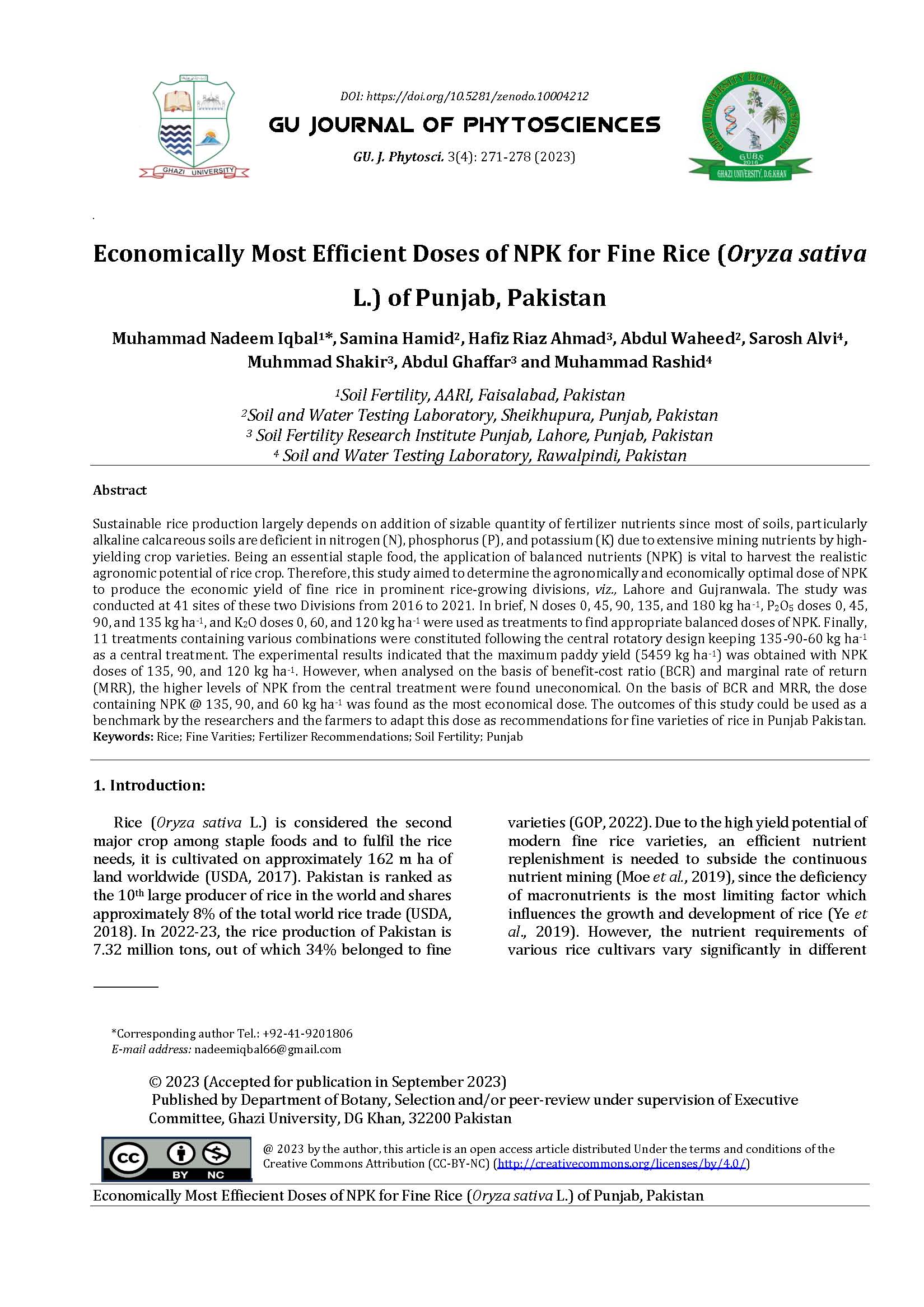Economically Most Efficient Doses of NPK for Fine Rice (Oryza sativa L.) of Punjab, Pakistan
Keywords:
Rice, Fine varieties, Fertilizer Recommendations, Soil fertility, PunjabAbstract
Sustainable rice production largely depends on addition of sizable quantity of fertilizer nutrients since most of soils, particularly alkaline calcareous soils are deficient in nitrogen (N), phosphorus (P), and potassium (K) due to extensive mining nutrients by high-yielding crop varieties. Being an essential staple food, the application of balanced nutrients (NPK) is vital to harvest the realistic agronomic potential of rice crop. Therefore, this study aimed to determine the agronomically and economically optimal dose of NPK to produce the economic yield of fine rice in prominent rice-growing divisions, viz., Lahore and Gujranwala. The study was conducted at 41 sites of these two Divisions from 2016 to 2021. In brief, N doses 0, 45, 90, 135, and 180 kg ha-1, P2O5 doses 0, 45, 90, and 135 kg ha-1, and K2O doses 0, 60, and 120 kg ha-1 were used as treatments to find appropriate balanced doses of NPK. Finally, 11 treatments containing various combinations were constituted following the central rotatory design keeping 135-90-60 kg ha-1 as a central treatment. The experimental results indicated that the maximum paddy yield (5459 kg ha-1) was obtained with NPK doses of 135, 90, and 120 kg ha-1. However, when analysed on the basis of benefit-cost ratio (BCR) and marginal rate of return (MRR), the higher levels of NPK from the central treatment were found uneconomical. On the basis of BCR and MRR, the dose containing NPK @ 135, 90, and 60 kg ha-1 was found as the most economical dose. The outcomes of this study could be used as a benchmark by the researchers and the farmers to adapt this dose as recommendations for fine varieties of rice in Punjab Pakistan.

Downloads
Published
How to Cite
Issue
Section
License
Copyright (c) 2023 The Authors

This work is licensed under a Creative Commons Attribution-NonCommercial 4.0 International License.
All works published by the GU Journal of Phytosciences are freely available to copy, distribute, transmit, and adapt the work provided the original work and source are appropriately cited under a CC BY-NC 4.0 International License. The CC BY-NC licence allows for maximum re-use of open-access materials, and the author has full copyright over their publication. Under this license, users are free to share (copy, distribute, and transmit) and adapt for any purpose, but not for any commercial use (read full legal code).
Under Creative Commons, authors retain copyright in their articles.



